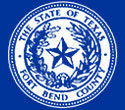Start building out a real mass transit network, like, now.
In just one year, Fort Bend County gained 27,000 residents – cementing its position as one of the fastest growing counties in the nation, according to the most recent U.S. census data.
This trend of rapid growth will continue into the coming decades as projections show Fort Bend doubling in size, reaching nearly 2 million residents by 2050.
[…]
The goal is to try and stay ahead of the population that’s coming, but [Fort Bend County’s economic development director Carlos] Guzman says that’s proven to be a difficult task.
“The challenge is always keeping up with the infrastructure, because you cannot build roads fast enough to accommodate all this growth,” he said.
One of the major developments is plans to expand the Fort Bend County Toll Road over the Brazos River at Sienna. The goal is to help the flow of traffic throughout the county and open up more opportunities for development on the west side of Brazos River.
“If it takes you 30 minutes to get anywhere then it takes away from the charm.” Guzman said.
While [County Commissioner Dexter] McCoy applauds efforts to increase mobility, he wants to ensure that the county is taking an intentional approach that will increase transportation options for all residents.
“It can’t just be about expanding concrete, it also has to be about what are the other modes of transportation that we’re going to employ to get people around?” he said.
Angie Wierzbicki, a Missouri City resident, said she’d like to see more multi-modal transportation models.
“Obviously, we have a huge growth in numbers. We do need roads, but I wish there was also emphasis on other transportation,” she said.
The demand for alternative transportation is clear. According to data from Fort Bend Transit – the county’s park and ride service – the organization made more than 11,700 trips in the month of May with an average of 536 trips per day.
McCoy said his office wants to move Fort Bend Transit from a demand response system to a fixed route system. But as the county continues to grow, it will take intentional planning to ensure the transit systems buses can easily navigate through new neighborhoods and reach residents.
Start. Planning. For. That. Now. Take it from your older cousin over in Harris County, the best time to build a transit network is before you get to be too big and crowded and built on all-car-all-the-time assumptions. It is not possible to build enough car lanes. Even if you could for your highways – and again, and speaking from decades of painful, expensive experience, you absolutely cannot – all that traffic eventually dumps out onto your surface roads and into your parking lots, which will not be able to handle all that extra throughput.
Start doing it now, while there’s still time to plan for that growth and room to accommodate bus lanes or even (heaven forfend) rail lines. I guarantee, if you wake up some day in the 2040s without having done any of this and realize just how screwed you now are, it still won’t be too late to start, but it will be much harder and more expensive and disruptive, and there will be larger and more powerful entrenched interests to fight you over it. The best time to build out transit is always “twenty years ago”. Well, congratulations, that’s where and when you are now. Don’t screw it up.
Whether you decide to scale up Fort Bend Transit or work to expand Metro into Fort Bend – I know, Metro cannot be trusted right now, but that won’t be the case forever – is your call. You’ll obviously want to factor in connectivity with Metro, and that can be messy, but deal with it anyway. Do what we didn’t do when we were in your position and think long term. I wish you the best.

